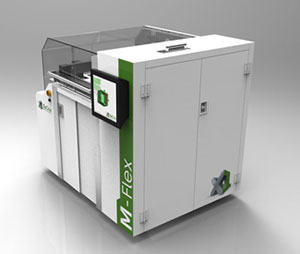ExOne’s binder jetting metal 3D printing technology is further proving its worth as a cost-effective industrial solution with the introduction of Inconel 625 to its range of available materials.
Inconel 625 is part of the austenitic nickel-chromium-based superalloys Inconel family, trademarketed by Special Metals Corp. and typically used in high temperature applications. Inoconel alloys present excellent oxidation and corrosion resistance properties but are difficult to shape and machine by traditional techniques due to rapid work hardening, the strengthening of a material by plastic deformation (which occurs to many types of both metals and polymers). Along with its resistance qualities it stands out for its ability to retain its strength even when subject to extreme environments or wide temperature ranges.
For all these properties, Inconel alloy 625 is commonly used for components in advanced sectors such as the aerospace, chemical and energy markets, with wide ranging applications that include turbine blades, filtration and separation of materials, heat exchangers and molding processes.

Through its ExMal group, ExOne partners with customers in researching new materials for its 3D printing technology, in an effort to increase its portfolio of qualified metals, achieve machine performance improvements and explore new applications for 3D printing. The German manufacturer ultimately seeks to build a network of qualified ExTEC affiliates (its training and educational centers) thus addressing the ever broader range of opportunities in the rapidly growing arena of metal 3D printing. Its next goal is to successfully introduce titanium, which, as the company reports, has already produced excellent results and preliminary testing and printing research. ExOne intends to qualify new materials approximately every six months.
“Our machines provide higher volumetric output per unit of time compared with other metal 3D printing technologies,” Rick Lucas, ExOne’s Chief Technology Officer, commented. “[They also show] greater flexibility for simultaneously printing multiple production parts. We believe that the ability to directly print highly dense metal components increases our competitive edge with both subtractive manufacturers and other metal 3D printing technologies.”



